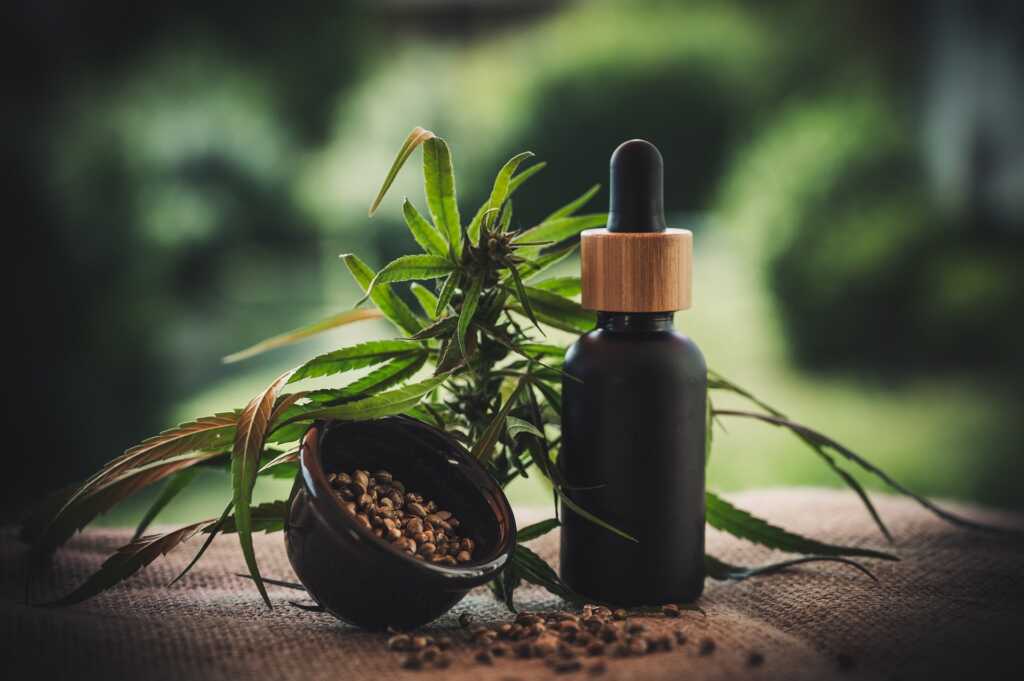Even with an increasing focus on women’s health in recent decades and new therapeutic approaches, common issues are still inadequately managed[1]. Traditional treatments have often caused undesirable side effects and have failed to improve conditions or symptoms. More and more women have reported cannabis as an effective remedy for treating a wide range of women’s health issues, including pain during menstruation and endometriosis[2]. While the use of cannabis in the treatment of women’s health conditions may seem new to many of us, in fact, it has a long history dating back to 2000 BCE[3].
History of Cannabis Use for Women’s Health Conditions
The earliest reference to cannabis in the treatment of female health conditions can be traced back to ancient Mesopotamia, where mint and saffron were blended together to form a mixture called Azzallú, which was used to treat menstrual pain[3].
The earliest reference to cannabis in the treatment of female health conditions can be traced back to ancient Mesopotamia
Ancient Chinese, Persian and Egyptian civilizations were found to use cannabis to treat a spectrum of women’s health symptoms, including bloating, cramping and menopause[2]. Even Queen Victoria used cannabis to alleviate menstrual cramping! This led to a surge in Victorian physicians promoting the use of cannabis for female ailments in the late 1800s. Eventually, the use of cannabis as a treatment option for women’s health conditions was adopted by Western medicine and continues to be studied and referenced to this day[3].

The Endocannabinoid System and Women’s Health
Cannabis produces its effects by interacting with the body’s endocannabinoid system. The endocannabinoid system (ECS) is a unique communication network that regulates many important functions, including how a person feels, moves and reacts[2].
The ECS works through the binding of endocannabinoids to cannabinoid receptors[4]. Endocannabinoids are small molecules synthesized on demand within our body. A deficiency in these endocannabinoids can lead to dysregulation, ultimately causing an imbalance in the body which may predispose an individual to health issues[4].
Endocannabinoids are small molecules synthesized on demand within our body
The cannabis plant contains over 120 phytocannabinoids that bind to the body’s cannabinoid receptors and modulate its beneficial effects[2]. Essentially, phytocannabinoids can supplement our body’s own endocannabinoids and restore balance.
In the context of women’s health, many conditions are thought to be related to an endocannabinoid deficiency[2]. Cannabis can play an important role in treatment by interacting with cannabinoid receptors located in the female reproductive system[5].
In the context of women’s health, many conditions are thought to be related to an endocannabinoid deficiency
Cannabis and Dysmenorrhea
With up to 90% of women of reproductive age experiencing period pain, it’s rare for a female to have never experienced dysmenorrhea[6]. (Click here to read about Sydney’s Struggle with Painful Periods!)
Dysmenorrhea is the clinical term for abdominal pain and uterine cramping associated with menstruation[6]. While there is a lack of research and clinical trials investigating the effect of cannabis on period pain, anecdotal evidence shows symptoms associated with menstrual periods may be alleviated by cannabis[7][8].
Dysmenorrhea is the clinical term for abdominal pain and uterine cramping associated with menstruation
The exact mechanism of these pain-relieving effects has not yet been proven. Evidence shows dysmenorrhea may be an inflammatory condition, partially mediated by endocannabinoids[2]. As a result, the anti-inflammatory effects of cannabis can lower pain related to the inflammation of the uterus[5]. In addition, researchers have found a high density of cannabinoid receptors and endocannabinoids located in the uterus, suggesting the importance of the ECS and utilization of cannabis in the management of dysmenorrhea-related pain[5].
Cannabis and Endometriosis
Endometriosis is a condition characterized by an abnormal growth of endometrial-like tissue outside of the uterus-lining, usually on surrounding organs such as the fallopian tubes or the ovaries[9][10][11]. Symptoms of endometriosis can include severe menstrual cramps, pain during intercourse, chronic pelvic/abdominal pain and other types of severe pain that are often difficult to alleviate[11]. It is estimated that endometriosis affects 1 in 10 women of childbearing age[10].
Endometriosis is a condition characterized by an abnormal growth of endometrial-like tissue outside of the uterus-lining
Research in animal models has shown that cannabinoid receptors may play an important role in endometriosis[11][12]. Endocannabinoids might regulate the nerves involved in abnormal tissue growth, as well as play an important role in the management of pain[11].
In a recent Australian survey, approximately 10% of women reported using cannabis as a self-management strategy for symptoms associated with endometriosis. In this survey, sleep, anxiety, depression, and gastrointestinal symptoms, including nausea and vomiting, were the five areas in which women reported the most significant improvements[13]. In a retrospective study, medical cannabis has also been shown to be safe and effective in the management of chronic pelvic pain in 79 women in Canada[14].

Cannabis in Pregnancy and Breastfeeding
According to the Society of Obstetricians and Gynecologists of Canada, it is recommended to avoid using cannabis while pregnant and breastfeeding[15]. Cannabis, in all dosage forms, can negatively impact brain development and may result in downstream learning and behavioral issues lasting a lifetime[15]. Some studies have shown the use of cannabis during pregnancy may be associated with low birth weight, preterm labour and stillbirth[15][16]. In addition, fetal cannabis exposure may lead to poor childhood memory function and long-term health problems related to cardiovascular and mental health[15].Cannabis compounds can pass through breast milk, which may lead to slow motor development, reduced muscle tone and poor suckling[15]. As researchers continue to learn more, the safest option for women is to avoid using cannabis while pregnant or breastfeeding.
Bottom Line
Cannabis may have an important role to play in managing different women’s health issues. Anecdotal, self-reported and retrospective evidence has shown it to be effective in managing symptoms of dysmenorrhea and endometriosis, with minimal side effects. Large scale randomized control trials are needed to better establish effective dosing regimens, dosage forms and the long-term safety of cannabis in relation to women’s health. Finally, cannabis should not be used during pregnancy or while breastfeeding.
Authors:
Saara Manji BSc. Pharm Candidate
Faculty of Pharmacy
University of Waterloo
Edited and Reviewed by:
Dr. Rahim Dhalla, PharmD
Ownder and Founder of Hybrid Pharmacy
https://hybridpharm.com/
References:
1. Nichols, F. H. (2000). History of the Women’s Health Movement in the 20th Century. Journal of Obstetric, Gynecologic, & Neonatal Nursing, 29(1), 56-64.
2. Backes, M. 2017. Cannabis pharmacy: The Practical Guide to Medical Marijuana. Black Dog and Leventhal Publishers.
3. Russo, E. (2002). Cannabis treatments in obstetrics and gynecology: a historical review. Journal of Cannabis Therapeutics, 2(3-4), 5-35.
4. Lu, Y., & Anderson, H. D. (2017). Cannabinoid signaling in health and disease. Canadian journal of physiology and pharmacology, 95(4), 311-327.
5. Taylor, A. H., Abbas, M. S., Habiba, M. A., & Konje, J. C. (2010). Histomorphometric evaluation of cannabinoid receptor and anandamide modulating enzyme expression in the human endometrium through the menstrual cycle. Histochemistry and cell biology, 133(5), 557-565.
6. Ju, H., Jones, M., & Mishra, G. (2014). The prevalence and risk factors of dysmenorrhea. Epidemiologic reviews, 36(1), 104-113.
7. Robson, P. (2001). Therapeutic aspects of cannabis and cannabinoids. The British Journal of Psychiatry, 178(2), 107-115.
8. Grinspoon, L. G., Grinspoon, L., & Bakalar, J. B. (1997). Marihuana, the forbidden medicine. Yale University Press.
9. Mayo Clinic Endometriosis – Symptoms and causes. (2020). Retrieved 11 June 2020, from https://www.mayoclinic.org/diseases-conditions/endometriosis/symptoms-causes/syc-20354656
10. Singh, S., Soliman, A. M., Rahal, Y., Robert, C., Defoy, I., Nisbet, P., & Leyland, N. (2020). Prevalence, Symptomatic Burden, and Diagnosis of Endometriosis in Canada: Cross-Sectional Survey of 30 000 Women. Journal of Obstetrics and Gynaecology Canada.
11. Dmitrieva, N., Nagabukuro, H., Resuehr, D., Zhang, G., McAllister, S. L., McGinty, K. A., … & Berkley, K. J. (2010). Endocannabinoid involvement in endometriosis. PAIN®, 151(3), 703-710.
12. Escudero-Lara, A., Argerich, J., Cabañero, D., & Maldonado, R. (2020). Disease-modifying effects of natural Δ9-tetrahydrocannabinol in endometriosis-associated pain. Elife, 9, e50356.
13. Sinclair J, Smith CA, Abbott J, Chalmers KJ, Pate DW, Armour M. Cannabis Use, a Self-Management Strategy Among Australian Women With Endometriosis: Results From a National Online Survey. J Obstet Gynaecol Can. 2020;42(3):256‐261. doi:10.1016/j.jogc.2019.08.033
14. Ngan, T., Litt, M., Eguzo, K., & Thiel, J. (2019). Patient Outcomes Following Initiation of Medical Cannabis in Women with Chronic Pelvic Pain. Journal Of Minimally Invasive Gynecology, 26(7), S89-S90. doi: 10.1016/j.jmig.2019.09.751
15. Cannabis and Pregnancy. Society of Obstetricians and Gynaecologists of Canada. (2020). Retrieved 11 June 2020, from https://www.pregnancyinfo.ca/learn-more/
16. Varner, M. W., Silver, R. M., Hogue, C. J. R., Willinger, M., Parker, C. B., Thorsten, V. R., … & Stoll, B. (2014). Association between stillbirth and illicit drug use and smoking during pregnancy. Obstetrics and gynecology, 123(1), 113.




Leave a Comment